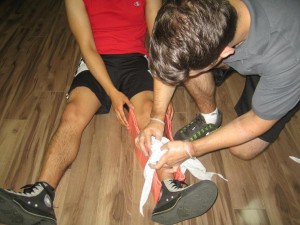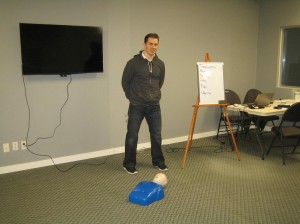
Heart disease is the leading cause of death for both genders in the US. It killed nearly 300,000 women in 2009, one in every four deaths. While heart disease kills more men than women each year, only 54% of women actually detect symptoms of a heart attack early on. They are also not aware that heart disease is their leading cause of death. An even more drastic statistics, that 64% of women who died from a heart problem (coronary artery disease) exhibited no previous symptoms. As trained rescuers, it is important that you remember that people don’t often exhibit any symptoms at all that predispose them for a heart attack.
Symptoms particular to women
- Dull, heavy, sharp pain or discomfort in the jaw, neck, or throat, as well as the upper abdomen and back. Men often experience different symptoms, typically focused on chest pain that radiates to the left arm and nape. These symptoms may occur during rest or heavy physical activity.
- Nausea and vomiting
- Shortness of breath/ difficulty breathing
- Fatigue
- Swelling of the lower extremities
- Symptoms of a stroke
CPR and first aid training

Our locations are spaced out all over the country, in five states and six cities. We have five training programs available, three basic and two advanced courses. All of them include basic skills training in CPR and first aid.
- Basic Heartsaver
- Basic Heartsaver C
- Basic Life Support for HCPs
- Advanced Cardiac Life Support
- Pediatric Advanced Life Support
The first three programs in the list are Basic Life Support courses. The two Heartsaver programs teach single-person rescue, focusing on three skills: compression, ventilation, and defibrillation. The first Heartsaver program is for the general public while the second is for healthcare providers.
Certified rescuers
Rescuers from our training programs are all certified in CPR training. We simply require a student to have complete attendance and passing grades on the tests before we award him or her with a CPR training credential. The credential is valid for a full 24 months before it has to be renewed. Remember to sign up for a re-certification class before the expiration date, or else you will have to take the program again. Re-certification is only offered for three of our courses: BLS for HCPs, ACLS, and PALS.
- BLS for HCPs re-certification – 4 hrs.
- ACLS re-certification – 4.5 hrs.
- PALS re-certification – 4.5 hrs.
Basic Life Support for HCPs is one of the more advanced basic courses, tailored only for people in healthcare. It teaches one and two-person CPR, as well as the 2010 Basic Life Support Guidelines by the AHA (American Heart Association).
The last two programs on the list are advanced courses, taken by healthcare professionals. The first, ACLS, is for adult cases while the second, PALS, is for pediatric cases. Both programs take two days to complete, taking more than 14 class hours in total.
